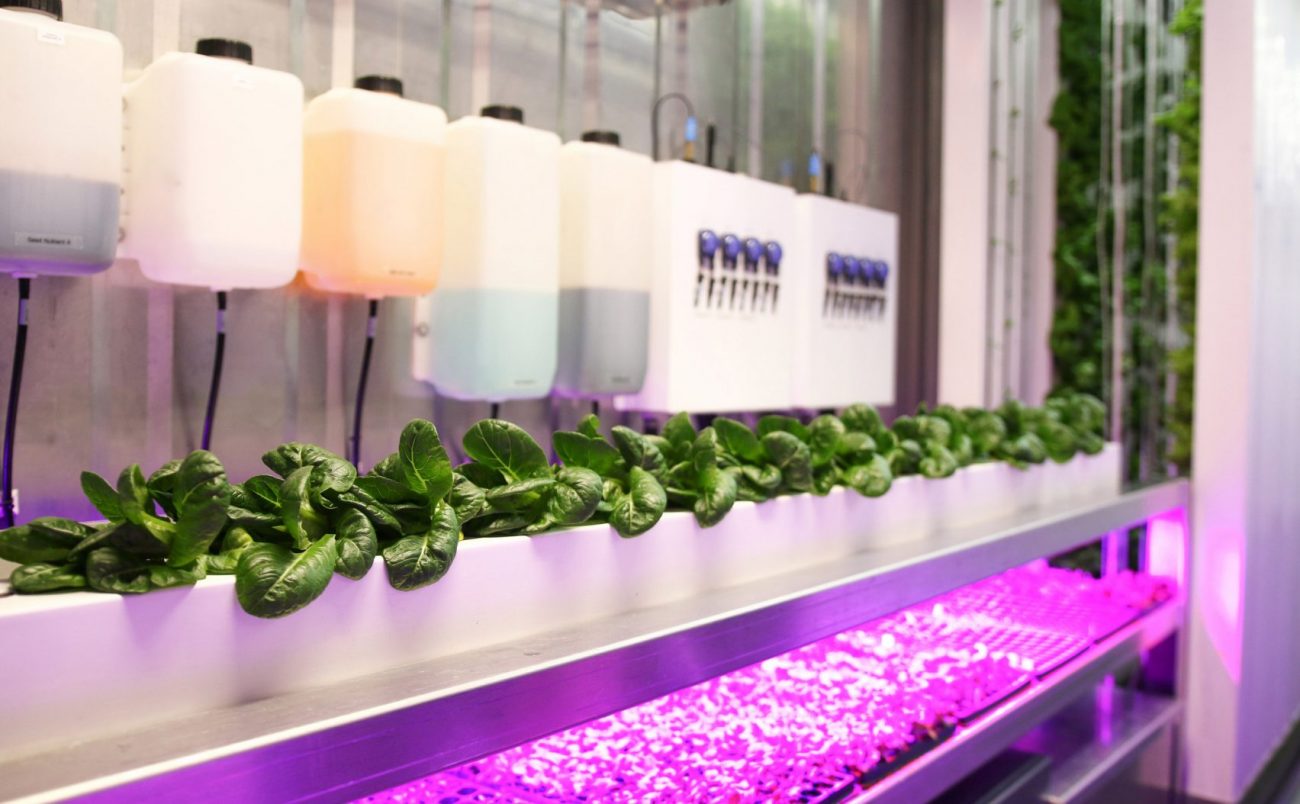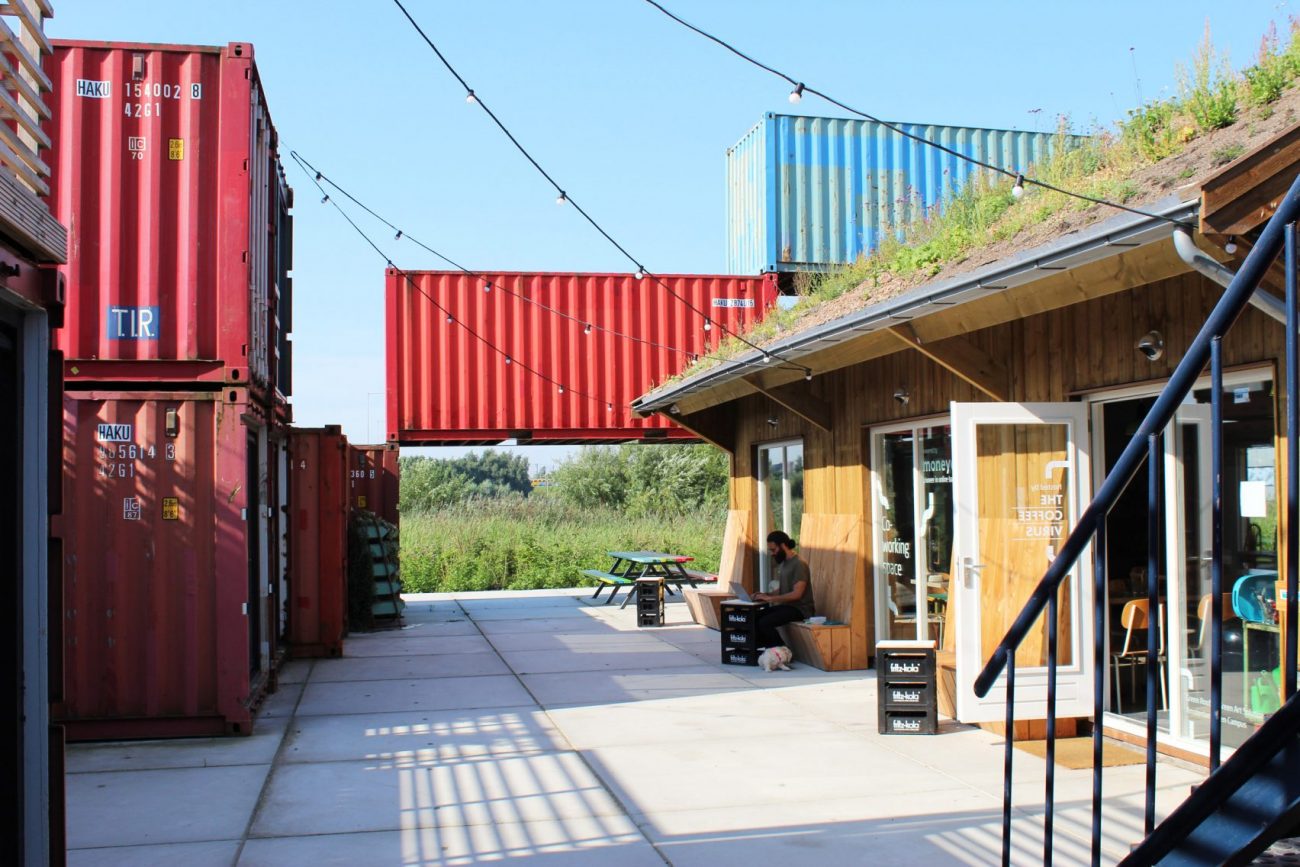Boots are made for walking and containers are made for shipping, right? Well, not if you ask everyone! Today, we see an exhilarating creativity in the reuse of shipping containers – living spaces, hotels, bars, pop-up stores, emergency shelters, bridges, art projects, and urban farming – the list goes on. Greencarrier Liner Agency loves the idea of recycling and innovation. Let us introduce you to some of the creative-minded people who – literally – think outside the box!
Urban farming – growing crops inside shipping containers
Freight Farms has found a way to grow crops inside shipping containers. Their hydroponic farming system called The Leafy Green Machine uses hi-tech growing technology to transform discarded shipping containers into mobile farm units. Each farm can produce as much food as a two-acre plot of land on a much smaller plot than is required by traditional crops. As the outdoor climate has no impact on the conditions inside the container, food can be produced throughout the year and in any location. The project truly taps into the growing trend for urban farming and reduces the ecological footprint of food production.

Life uncontained – living inside Evergreen Line shipping containers
For the claustrophobic reader, it is now time to cover your eyes! After spending years not knowing what to do with their lives, this couple decided to chase what made them happy. Inspired by their past road trips, the hippies of the seventies, and Elon Musk, they chose to risk everything: They sold their traditional home, quit their jobs, and moved from Florida to Texas to build their dream debt-free net zero shipping container home using a couple of Evergreen Line Shipping containers. Are you intrigued? Follow their journey on YouTube!
A piece of container artwork you just can’t take your eyes off
As a part of his project “Women are Heroes,” the French artist JR turned shipping containers into a stunning piece of floating art. The picture assembled on the containers represents the eyes of a woman called Elisabeth who lives in the Kibera slums in Nairobi. When JR met and photographed her, she said “Make my story travel with you.” Using thousands of strips of paper placed by dock workers on the sides of the containers, JR created two eyes gazing at the world while travelling the oceans – two eyes belonging to women who will never travel across those oceans – made possible by art.

Container skyscrapers to replace slum housing
CRG Architects have come up with the concept for Container Skyscraper. The idea is to provide temporary accommodation to replace slum housing in developing countries. As many cities are facing unprecedented demographic, environmental, economic, social and spatial challenges, stacking recycled shipping containers to create cylindrical-looking towers can create high-density, cost-effective housing in urban areas. This is a truly innovative idea both in terms of CSR and the environment.

Container village startup hub for young companies
Dutch architect Julius Taminiau has created a temporary startup hub in Amsterdam using shipping containers. He has turned a derelict patch of land into a low budget, temporary space for young companies. In this dynamic village, the startups will inspire, collaborate across sectors, exchange knowledge and produce unexpected and paradigm-shifting creations. As the containers are placed upon concrete tiles, everything can be reused when the village is taken apart in the future and no trace will be left – an eco-friendly and innovative solution, which we are all about at Greencarrier Liner Agency!

3 reasons for reusing shipping containers
As exemplified above – shipping containers can be so much more than just a box to ship commodity in. The reason for reusing shipping containers for other purposes than shipping is not only that they are extremely flexible, can solve a bunch of problems and be used in such innovative, unique, creative and cool ways – there is much more to it.
When containerisation conquered the global trade, shipping containers were standardised for intermodal freight transport. The standardisation made it possible to transport larger freight volumes and use different modes of transport without having to unload or reload the goods. Today, shipping containers still serve their purpose, but also provide great advantages when used as Intermodal Steel Building Units (ISBU).
1. Shipping containers are excellent construction material
From a structural point of view, containers are excellent construction material. As they spend the majority of their lifetime outdoors, the material is ideal for exposure to the elements of nature. The steel construction and design provide protection and strength as well as structural support and a long lifespan. The corner assemblies and locking mechanism also provide stability when multiple containers are being used in the construction of a building.
2. Buying empty shipping containers can be cost-efficient
Looking at costs, the reuse of shipping containers can be cost-efficient. A shipping container’s initial purpose is to carry cargo at sea, therefore it has to be cargo worthy throughout its lifespan. Most containers are finished as shipping containers after ten years in service and they are being replaced. Even though container stock is tight for most shipping lines, there is a big aftermarket for those replaced units retired from service at sea. To use those units as building material is inexpensive compared to traditional materials, such as wood, bricks or steel.”
3. Reusing shipping containers is sustainable construction practice
Recycling of any sort is eco-friendly. This is especially true when it comes to reusing shipping containers. It is, without doubt, sustainable construction practice; recycling unused containers for construction material puts an unused product to use while at the same time cleaning up spaces such as ports and shipyards. Shipping containers are also excellent for making use of solar power and can be insulated with eco-friendly materials.
So, what are you going to do with your old shipping containers? Or perhaps, you have had a construction idea for some time now, that you might rethink? Anyways, I hope my blog post got some of your creative juices flowing! For more inspiring articles, please visit our Container Shipping Knowledge Center.




